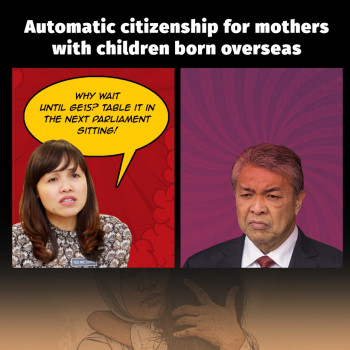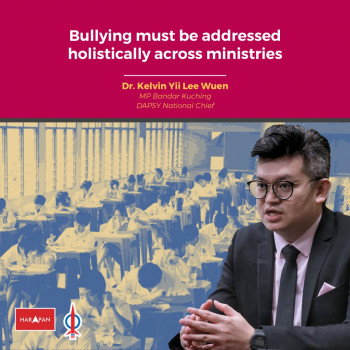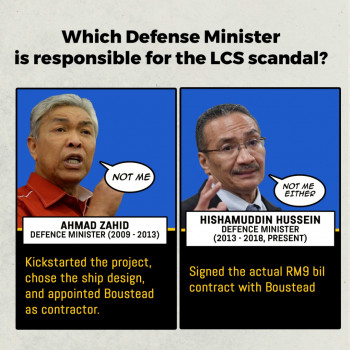 Rumah Juing, a longhouse at Pasir Emas, Sibu, faces a grim future. The land on which the longhouse was built in 1989 will be alienated to a private company. More than 200 of the longhouse folks cried for help from the Barisan Nasional, but none came.
Rumah Juing, a longhouse at Pasir Emas, Sibu, faces a grim future. The land on which the longhouse was built in 1989 will be alienated to a private company. More than 200 of the longhouse folks cried for help from the Barisan Nasional, but none came.
No native customary rights (NCR) can be created after 1 January 1958. That is encapsulated in the Land Code (Sarawak). As such, the longhouse folks in Pasir Emas are squatters, and they are not the only squatters in Sarawak, where land is plenty.
It is quite normal for longhouse to split or expand, but when they venture outside the “parameter” of the NCR, they will be deemed as squatters. Unfortunately in Sarawak, many longhouses are built on state land. Though some of these longhouses have been supplied with water and electricity, many are not.
The native ADUNs from the BN dare not speak for them, as it is political suicide to incur the wrath of their political masters. NCR lands are dwindling, being alienated by the state government to crony conglomerates for oil palm plantations.
New Scheme
Through a scheme cleverly designed to involve the landowners, the natives ventured into partnership with big companies, the LCDA and its subsidiary companies. 406,425 hectares of NCR land had been agreed for development under the joint ventures arrangement.
However, more foreigners are employed than locals since the New Concept of NCR Land Development was hatched in 1996.
The natives received a pathetic amount of dividends from their own land. On 13 May 2009, James Masing, the Minister of Land Development, told the state assembly (DUN) that only four out of the existing joint ventures managed to pay out dividends amounting to RM2,301,116.86. That amounts to RM0.27 per acre per year, a sum hardly sufficient to buy a cigarette!
The natives consider land as their life. Bloodshed has occurred because of land disputes. Legal battles have been waged for years, but there is little in sight to reduce the plight of the natives.
The Federal Court had declared that NCR land comprises not only the land where the longhouses stand, but also the areas which their ancestors have cleared for cultivation, accessed for fishing, hunting and to gather forest produce, namely all rights associated with “temuda”, “galau” and “pemakai menoa”.
Yet, the Sarawak state government does not seem to recognise this basic concept of NCR land ownership.
Since 10 years ago, the state government had promised to set up a native land register and to survey NCR land. Only a tiny proportion of the NCR land had been surveyed, but then, Pakatan Rakyat and the natives’ call for the survey to include “temuda”, “galau” and “pemakai menoa” have seemingly fallen on deaf ears.
The state government does not seem to hurry, only because the natives are the vote bank of the BN.
Cutting Off Rights?
Recently, the State Attorney General of Sabah claims that no NCR land can be created after 1930 in Sabah. In Sarawak, the cut-off point is 1 January 1958.
No one has taken this matter to court. Only the natives who are directly affected have the locus standi (legal position) to challenge the legal provision in court. More than 50 years have passed; the natives are not claiming that the law has to be otherwise.
Article 153 of the Federal Constitution preserves the special rights or privileges of, among others, the natives of Sarawak. They remain natives even after 1 January 1958. Their native customary rights are recognised by the common law, and, under Article 153, cannot be extinguished by any state enactment. It is possible to argue that to refuse to recognise NCR after 1 January 1958 is inconsistent with Article 153.
The federal constitution is the supreme law of the land and any law inconsistent to it is unconstitutional. Clearly, it is in the natives’ interest to launch a legal salvo concerning its constitutionality.
DAP must venture more into the native areas and to educate the natives about their rights under the federal constitution. Toward that end, DAP has admitted many prominent Dayak leaders and established the Dayak Consultative Council to advise the Sarawak state committee on Dayak affairs.
The natives are the poorest folks in Sarawak. Land has been taken from them without much benefit, and they join the 100,000 Sarawakians who have to look for greener pastures in Singapore, Johore, Klang Valley and Penang.
The 13th General Election will be a watershed. The majority of the parliamentary seats in Sarawak are Dayak seats. When these Dayaks rise en masse to demand their rights, the BN will be the federal opposition in parliament.
<<Inset Box>> New Concept For NCR
Section 18(a) of Sarawak Land Code empowered the Sarawak Land Development Board and the Land Custody Development Authority (LCDA) to use their ordinances to declare an area as a ‘Development Area’ and a lease over such land may be issued for a period of not more than 60 years to any corporate body approved by the Minister.
On the expiry of the lease, any native whose land had been included in a ‘Development Area’ must apply to the Superintendent of Land and Survey if they wish to re-establish their land rights.
The Superintendent may issue such a grant to the people concerned upon such terms and conditions as he deems fit to impose. In policy this legal power has been called Konsep Baru or New Concept for NCR land development.
Source – John Brian Anthony, Chairman of Dayak Consultative Council



